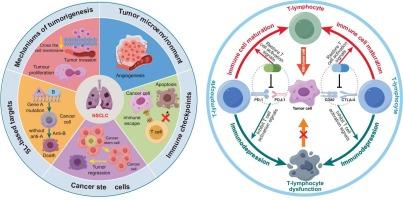Comprehensive non-small cell lung cancer targets: From computational prediction to clinical breakthroughs in overcoming drug resistance
IF 5.6
2区 医学
Q1 PHARMACOLOGY & PHARMACY
引用次数: 0
Abstract
Non-small cell lung cancer (NSCLC), the predominant subtype of lung cancer, remains a leading contributor to global cancer-related mortality. Conventional treatments—surgery, chemotherapy, and radiotherapy—are often limited by suboptimal efficacy and substantial toxicity, underscoring the urgent need for more effective targeted therapies. This study provides a comprehensive overview of three key advancements in NSCLC research. First, it highlights state-of-the-art target prediction methodologies that integrate ligand-based, structure-based, and multi-feature deep learning models, supported by experimental validation. Second, it examines clinical progress in targeting classical oncogenic drivers, exemplified by the fourth-generation tyrosine kinase inhibitor amivantamab against epidermal growth factor receptor (EGFR), and explores mechanisms of drug resistance, such as T790M and C797S mutations, along with emerging strategies like synthetic lethality-based interventions. Third, it discusses combination regimens—such as osimertinib co-administered with savolitinib—that mitigate resistance by synergistically inhibiting compensatory signaling pathways, thereby enhancing clinical outcomes. Future research priorities include the design of multi-target therapeutics and the refinement of AI-driven target discovery frameworks. This review addresses current limitations in targeted NSCLC therapy and offers insights to guide future therapeutic development.

全面的非小细胞肺癌靶点:从计算预测到克服耐药性的临床突破。
非小细胞肺癌(NSCLC)是肺癌的主要亚型,仍然是全球癌症相关死亡率的主要原因。传统的治疗方法,如手术、化疗和放疗,往往由于疗效欠佳和毒性大而受到限制,因此迫切需要更有效的靶向治疗。本研究提供了NSCLC研究的三个关键进展的全面概述。首先,它强调了最先进的目标预测方法,这些方法集成了基于配体、基于结构和多特征的深度学习模型,并得到了实验验证的支持。其次,研究了针对经典致癌驱动因素的临床进展,例如针对表皮生长因子受体(EGFR)的第四代酪氨酸激酶抑制剂阿米万他抗,并探讨了耐药机制,如T790M和C797S突变,以及基于合成致死的干预等新兴策略。第三,它讨论了联合方案,如奥西替尼与萨伏替尼联合使用,通过协同抑制代偿信号通路来减轻耐药性,从而提高临床结果。未来的研究重点包括设计多靶点疗法和改进人工智能驱动的靶点发现框架。本文综述了目前靶向非小细胞肺癌治疗的局限性,并为指导未来的治疗发展提供了见解。
本文章由计算机程序翻译,如有差异,请以英文原文为准。
求助全文
约1分钟内获得全文
求助全文
来源期刊

Biochemical pharmacology
医学-药学
CiteScore
10.30
自引率
1.70%
发文量
420
审稿时长
17 days
期刊介绍:
Biochemical Pharmacology publishes original research findings, Commentaries and review articles related to the elucidation of cellular and tissue function(s) at the biochemical and molecular levels, the modification of cellular phenotype(s) by genetic, transcriptional/translational or drug/compound-induced modifications, as well as the pharmacodynamics and pharmacokinetics of xenobiotics and drugs, the latter including both small molecules and biologics.
The journal''s target audience includes scientists engaged in the identification and study of the mechanisms of action of xenobiotics, biologics and drugs and in the drug discovery and development process.
All areas of cellular biology and cellular, tissue/organ and whole animal pharmacology fall within the scope of the journal. Drug classes covered include anti-infectives, anti-inflammatory agents, chemotherapeutics, cardiovascular, endocrinological, immunological, metabolic, neurological and psychiatric drugs, as well as research on drug metabolism and kinetics. While medicinal chemistry is a topic of complimentary interest, manuscripts in this area must contain sufficient biological data to characterize pharmacologically the compounds reported. Submissions describing work focused predominately on chemical synthesis and molecular modeling will not be considered for review.
While particular emphasis is placed on reporting the results of molecular and biochemical studies, research involving the use of tissue and animal models of human pathophysiology and toxicology is of interest to the extent that it helps define drug mechanisms of action, safety and efficacy.
 求助内容:
求助内容: 应助结果提醒方式:
应助结果提醒方式:


